Donbass was blown up to the Germans
Now a somewhat more serious topic than the plans for the dissolution of collective farms by the German occupation administration. Donetsk coal basin and the circumstances of its occupation. Usually, the occupation of Donbass is spoken of very sparingly: it was captured by the Germans in October 1941, the mines were flooded, they could not get coal, underground workers, the Gestapo and, finally, the battles for liberation, which are described willingly and in detail.
In this topic, I was most surprised by two points. The first point: Donbass was not just a large, but the main industrial region in the USSR, which produced a significant share of pig iron and steel and mined a significant part of coal. In 1940, Donbass produced 94,3 million tons of coal from 165,9 million tons of all-Union production (56,8%). In the same 1940, in the Ukrainian SSR (mainly in the Donbass) 8,9 million tons of steel were smelted out of 18,3 million tons of all-Union smelting (48,6%). At the same time, the region supplied the entire European part of the USSR with coal and metal, including Moscow, Leningrad and Gorky - the largest industrial centers, and itself (together with Kharkov) formed a powerful cluster of large industrial enterprises. "Soviet Ruhr" - what else can I say?
In light of all this, surprisingly little attention was paid to the circumstances surrounding the loss of such an important industrial area. Although it was a turning point in the war, putting the country on the brink of defeat.
The second point: the Germans were able to do very little in the Donbass. This applies to coal mining, steelmaking, and other industrial production. And this is amazing. What happened to Donbass that even such a technically advanced nation could not take advantage of it? The circumstances of the occupation and the peculiarities of the work of mines and enterprises are described in the literature so sparingly that one gets the full impression of the desire to completely hide and forget this page. stories.
Why? The fact that the enemy was unable to take advantage of the Donbas is the largest military-economic victory in the war. In terms of value, it is even more significant than the defense of the Caucasus and its oil. Imagine that in the near rear of the Germans a large industrial region appears, which works even for part of the capacity, but at the same time produces 30-40 million tons of coal a year, 3-4 million tons of steel. The Germans are transferring their capacities for the production of ammunition, weapons, explosives, synthetic fuel there, they are driving masses of prisoners there to work. Wehrmacht receives ammunition weapon and fuel almost from the gates of the enterprises, and does not wait until all this is brought from Germany. The delivery arm is short, to the depth of the front rear, 300-400 km. Accordingly, each offensive is better prepared, with large supplies, which are replenished in the course of battles with new production. Could the Red Army then withstand the onslaught of German troops? I am sure that under the conditions described above, I could not.
In fact, the inability to use Donbass as a fuel and industrial base deprived Germany of the possibility of victory in a strategic sense. Already in 1942, the final defeat of the Red Army was becoming more and more illusory, since the transportation shoulder was inexorably stretched, and the possibilities of supplying supplies to the front were reduced from this. The Wehrmacht only reached the Volga. If the German army were faced with the task of fighting in the Urals, Kazakhstan, Siberia, it is very doubtful that they would be able to fight in these remote areas on a supply from Germany. The seizure and exploitation of Donbass solved this problem. But in Donbass, the Germans got shish without butter and, accordingly, lost their chances of a strategic victory.
This is how we know and appreciate the history of the war. The most important moment, which, in essence, determined the course of the entire Second World War, is almost completely overlooked and practically not studied. Thank you comrade. Epishev for our deep and comprehensive knowledge!
Complex destruction of Donbass
Having decided to hush up the history of the battles, the capture and occupation of Donbass, the party leaders responsible for the ideology created a riddle: they say, if the Germans seized Donbass in a rush and so that little was taken out of there, why did not it work into the occupation? One could explain this by the fact that the Germans were supposedly silly. But this was risky and could lead to a political squabble: if the Germans were stupid, then why did we retreat to the Volga then? Therefore, the ideological department of the Central Committee of the CPSU and its subordinate structures, including the legendary and indestructible Main Political Administration of the Soviet Army, with all their might pressed on the partisans, the underground and the Gestapo men who were chasing them. This should have made it clear that if something was left to the Germans, it was blown up by partisans or underground fighters, but in general it was the Germans who were to blame for everything: they blew up almost everything they saw.
This is all to the fact that such a strange image in the Soviet and Russian literature of the history of the occupation, which I constantly criticize, did not appear at all by chance and solved certain political problems.
In fact, there was no mystery: Donbass was destroyed, and it was destroyed soundly, in a complex manner, which excluded its quick restoration. This was the political problem. The admission that the Donbass was blown up themselves, even before the Germans arrived, could have caused the workers, especially the miners' masses, a question of this kind: "Did we, it turns out, worked hard like convicts so that you blew everything up here?" In those difficult post-war years, such a question could have caused great events.
We are spared such difficulties and therefore can consider the question on its merits. The situation dictated just such a decision. The front gradually retreated, how long it would stand was unknown; the Germans attacked everywhere and beat everywhere; Leaving the Donbass as it is for the Germans on the move meant losing the war. That is why this industrial area had to be destroyed. Stalin made a decision in principle in mid-August 1941, immediately after the capture of Krivoy Rog and its iron ore by the Germans, without which the ferrous metallurgy of Donbass could not work. The execution of this decision was the explosion of the Dnieper Hydroelectric Power Station on August 18, 1941. This hydroelectric power station fed mainly the Donbass.
During the evacuation, priority was given to dismantling and removing large power plants. This was the first stage of the comprehensive destruction of Donbass. The fact is that during the pre-war five-year plans the coal basin became mechanized and electrified. In December 1940, the share of mechanized coal mining amounted to 93,3%, including 63,3% with cutting machines and 19,2% with pneumatic or electric hammers (RGAE, f. 5446, op. 25, d. 1802, pp. 77 -12). Manual mining - 6,7% of production or 6,3 million tons of coal per year. If there is no electricity, then Donbass will not be able to extract about a hundred million tons of coal a year, and all this machine wealth of mine equipment becomes virtually useless.
That is, the Germans were left with only manual production. In December 1942, 68 large and 314 small mines produced 392 thousand tons of coal, which is 4,7 million tons on an annualized basis. Approximately 75% of their manual coal mining capacity.
The second stage of complex destruction is the flooding of mines. If there is no electricity, the pumps of the drainage system do not work and the mines are gradually filled with water. By the time of the liberation of Donbass at the end of 1943, 882 Donetsk mines were flooded, they had 585 million cubic meters of water. It was pumped out until 1947 according to a specially drawn up plan. Flooding is reversible, but very effective at preventing immediate coal mining. For some time, I considered flooding to be the main reason for the Germans' failures in Donetsk coal mining. However, Matthias Riedel published the data, citing a 1942 report from the mining and smelting company BHO (Berg- und Hüttenwerksgesellschaft Ost mbH), which was involved in the restoration and operation of the captured mines, which by the end of 1942 had restored 100 large and 146 small mines , 697 mines did not work, and 334 of them were flooded (Riedel M. Bergbau und Eisenhüttenindustrie in der Ukraine unter Deutscher Besatzung (1941-1944). // Vierteljahrshefte für Zeitgeschichte. 3. Heft, Juli, 1973, S. 267) ... That is, 47,6% of mines were flooded, and not all. Their complete or almost complete flooding was apparently a consequence of the destruction carried out by the Germans during the retreat; if, of course, the data in the Soviet publications are correct.
The third stage of the complex destruction of Donbass was still blown up. History lovers from Donetsk have discovered and published the diaries of Kondrat Pochenkov, at the beginning of the war, the head of the Voroshilovgradugol association, which included the trusts of the Voroshilovgrad region of Eastern Donbass. His diaries are an interesting source as they describe several curious things. Firstly, in 1941 Donbass was not captured by the Germans entirely, but only its western and southwestern parts. Secondly, the mines were blown up in 1941. Thirdly, since the mines were blown up and the front stabilized, in the winter of 1941/42 he had to deal with the restoration of what was blown up.
According to his notes, it is clear that the mine explosions were carried out from October 10 to November 17, 1941 by a number of trusts. Crossings of cross-sections, slopes, bremsbergs and drifts were undermined, as well as mine shafts and copra above them. After such detonations, the mine required a lengthy recovery in order to resume coal mining.
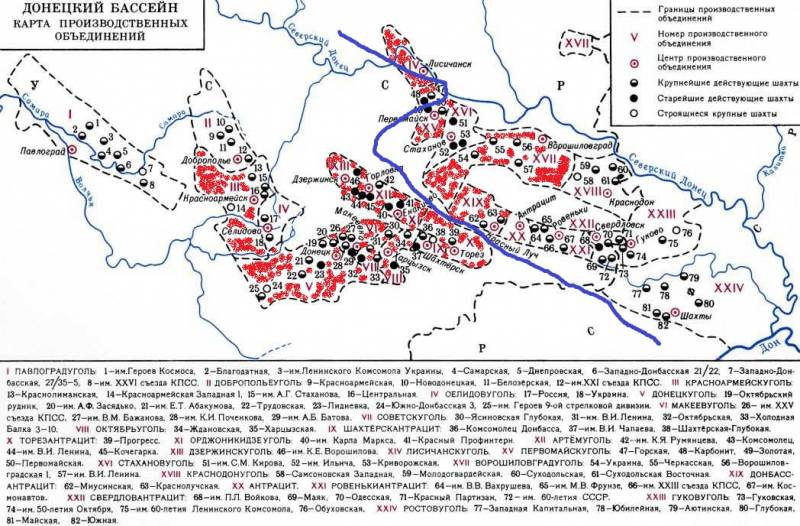
On the basis of Pochenkov's notes, I drew up an approximate map of the destruction in Donbass in October-November 1941: those trusts that Pochenkov wrote about the explosion; blue - approximate front line at the end of November 1941.
The map marks what Pochenkov wrote in his diaries; it is possible that this data is incomplete and inaccurate (if at all it is possible to collect such data on mine explosions in October-November 1941). But overall, the picture is pretty clear. The central group of coal trusts around the metallurgical plants was destroyed before the arrival of the Germans and went to them in a badly damaged state. With regard to the trusts, which in November 1941 remained in the hands of the Red Army, they hurried. And this is understandable: they expected a German breakthrough to Voroshilovgrad (Lugansk). However, the front then held out, and the Germans turned their blow to the southeast, towards Rostov.
Explosion for the second time
After the mine explosions stopped, Pochenkov began shipping coal that had accumulated in the remaining mines, including those already destroyed. On December 12, 1941, the People's Commissar of the Coal Industry of the USSR, Vasily Vakhrushev, asked for ideas on the restoration of mines.
By the way Pochenkov describes the restoration work, they faced the same difficulties as the Germans. First, they were given 4000 kW of electricity, but they only needed 11500 kW for small mines; he offered to return two turbines of 1941 thousand kW each to the Severodonetsk state district power station (it was partially working, in December 22 coal was shipped for it). He was promised, but not fulfilled. In February 1942, the trusts had a maximum of 1000 kW, supplied with great interruptions. There was not enough energy for drainage, and the mines were flooded, more and more every day. Secondly, the mining was carried out by hand, and the haulage of coal was carried out by horse-drawn carts. Pochenkov complained about the lack of forage and the death of horses. On February 21, 1942, the production was 5 thousand tons per day (150 thousand tons per month). For the whole of February 1942, the Germans mined 6 thousand tons of coal in the captured part of the Donbass.
Nevertheless, by the end of April 1942, it was possible to raise the daily production to 31 thousand tons in the remaining Donbass, and in mid-June 1942, when the order to explode mines was again received, production at Voroshilovugol reached 24 thousand tons and at Rostovugol - 16 thousand tons per day.
On July 10, 1942, the mines of a number of trusts were blown up again. On July 16, Pochenkov and his comrades left Voroshilovgrad, arrived at Shakhty, around which the coal enterprises were already prepared for the explosion. On July 18, 1942, the Anthracite Mines were blown up. By this time, almost the entire Donbass was blown up, in places twice, even before the arrival of the Germans.
In general, in light of this, the difficulties of the Germans in the operation of the Donbass coal mines receive a simple and logical explanation. If mines were blown up (both underground workings and mine shafts were blown up), flooded, equipment removed, hidden, damaged, there is almost no electricity or, in any case, it is extremely insufficient for any large-scale mining (in December 1942, out of 700 thousand kW capacity was only 36 thousand kW, of which 3-4 thousand kW were supplied for the mines, that is, even less than Pochenkov had in the first half of 1942), then it was impossible to extract coal.
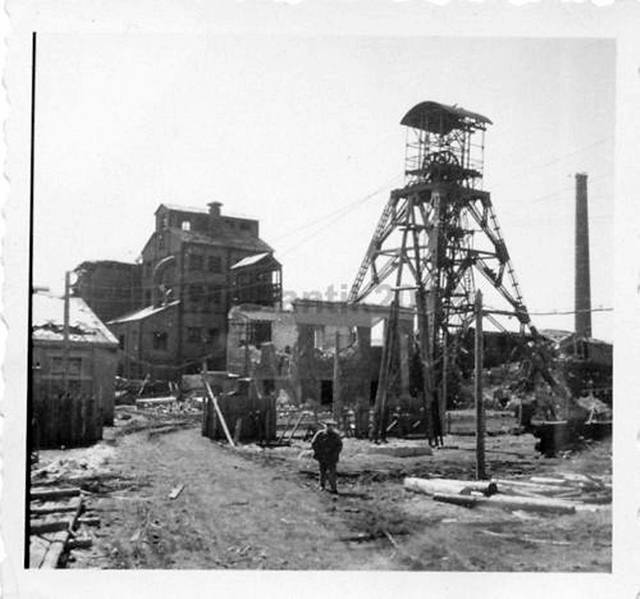
The destruction of aboveground structures at the Kochegarka mine in Gorlovka.
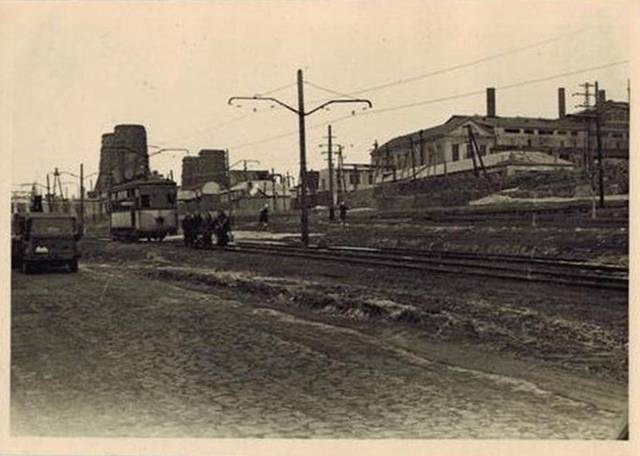
Interestingly, the tram in Gorlovka in 1942 was restored and supplied with electricity.
The Germans had to look for surviving or slightly destroyed mines, including small ones. But their production capacity turned out to be too small to meet the needs of railways, troops and restoration work in Donbass. They had to import coal from Silesia. According to the Wirtschaftsstab Ost report dated July 15, 1944, from the beginning of the war to August 31, 1943, 17,6 million tons of coal were imported to the occupied territories of the USSR, including 13,3 million tons for railways, 2,9 million tons for industry and 2 million tons for the Wehrmacht (RGVA, f. 1458k, op. 3, d. 77, l. 97). And in the Donbass itself, by the end of 1942, 1,4 million tons of coal were mined.
This circumstance - an acute shortage of coal in the occupied territories of the USSR - had, as already mentioned, far-reaching consequences for Germany and was one of the reasons for the strategic defeat.
I only wonder why all this had to be hidden? Is not Comrade himself? Stalin urged to "leave a continuous desert for the enemy"? In Donbass, his order was carried out very well.
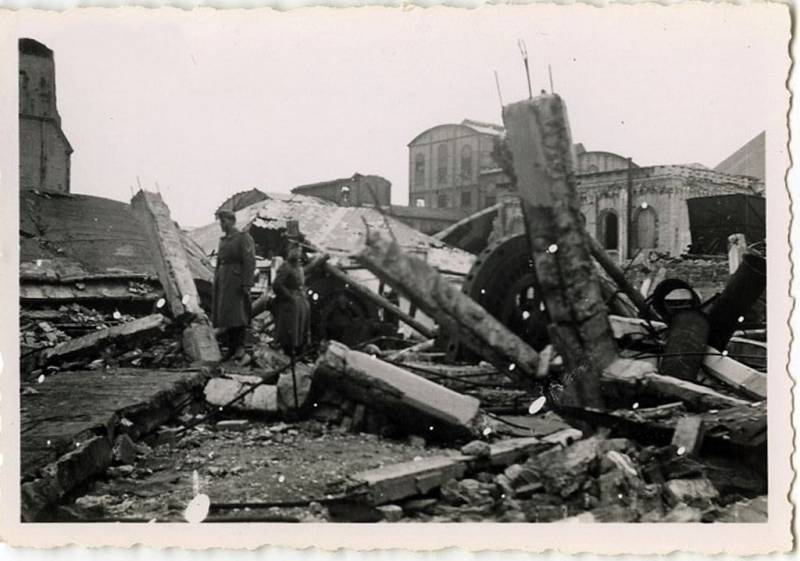
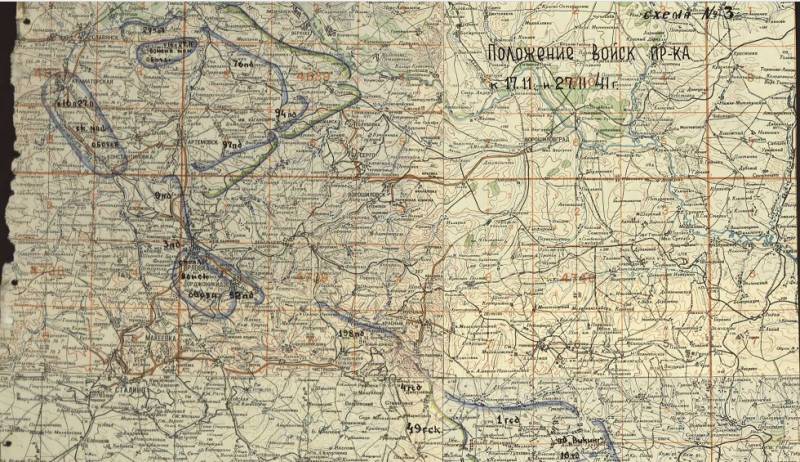
Information